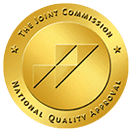Our compassion is unmeasurable
WE’VE BEEN THERE, WE KNOW WHAT IT’S LIKE
Founded in 2006 by Ed and Susie Hopson-Blum, New Method Wellness is truly a family business. Over the past ten years, with Bing Crosby joining as a board member in 2011, New Method Wellness has grown its California rehabilitation center exponentially, providing thousands of individuals the help they need to break free from the bondage of substance abuse addiction and truly start living. Each of our founders has a special relationship with substance abuse, whether it’s from personal experience or observance of a loved one suffering from addiction.
Their compassion is immeasurable. A beautiful Southern California treatment facility and unique therapy methods, New Method Wellness is not your usual recovery center. Primary treatment, dual diagnosis, private treatment, family group, outpatient treatment and extended care are only a few of the addiction treatment programs offered at New Method Wellness — there is a program for everyone. Not every person suffering from substance abuse addiction is the same. Every client requires individual attention and catered therapy, which is why the 3:1 staff to client ratio proves to be so successful. When treating persons with substance abuse addiction, it is important to treat the whole person – mind, body, and spirit – because when one aspect is off-balance, it can have a negative impact on the recovery process. That’s why at New Method Wellness, we aim to restore balance to all aspects of an individual to optimize healing and minimize relapse.
Our holistic treatment methods include the following:
Family values are important at New Method Wellness. Each client becomes a part of our family and they have the opportunity to stay involved in all aspects of our center once they join our alumni program. Happy sobriety is largely determined by the quality of each individual’s sober community, and we strive to meet that goal by providing a safe, comforting and warm community for each of our clients.
Mission Statement
Our mission is to lead the way in treating the disease of addiction and co-occurring disorders, providing individuals we treat with effective solutions for lasting recovery.
To achieve this mission, we deliver the highest quality of compassionate care in a safe, supportive environment conducive to personal growth and development.
Our Vision - To inspire trust and confidence as a dual diagnosis treatment provider of choice for addiction treatment.
INTEGRITY
We are accredited by the Joint Commission in order to increase oversight and accountability to ensure integrity and quality of care for all clients.
METHODOLOGY
We integrate clinical and holistic therapeutic, evidence-based practices to treat the body, mind, and spirit, which results in sustainable, long-term recovery with minimal relapse.
CLIENT-CENTERED VALUES
We provide tools and resources for clients to engage in their own recovery with the support of family, friends, and peers, which promotes meaningful, lifelong recovery.
DRUG & ALCOHOL DETOX
Often, after years of alcohol and drug abuse and dependence, the body and mind are…
SUBSTANCE ABUSE
We understand that substance abuse recovery is a sensitive endeavor and that’s why we…
RESIDENTIAL TREATMENT
We have many beautifully furnished homes sprinkled over the neighboring beach cities and…
PRIVATE TREATMENT
Our recovery program for executives, entrepreneurs, celebrities, & business caters to…
LGBTQ+
With the LGBTQ community youth 3x more likely to become addicted to drugs we developed…
TRAUMA-INFORMED CARE
Trauma survivors experience pain that others may not understand. Symptoms such as…
INTENSIVE OUTPATIENT
For clients who have completed any residential treatment for 30 or 60 days our…
EXTENDED AFTERCARE
It’s like having an insurance policy on your sobriety because we want you to stay…



